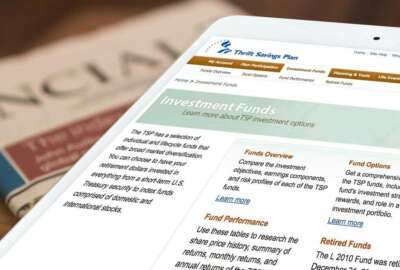
Leaving the TSP for more options? Think again.
The TSP is the envy of many investors because of its low administrative fees and federal oversite of the fund.
With nearly $600 billion in assets, the federal Thrift Savings Plan, Uncle Sam’s in-house 401k plan, has more money, as in cash on hand, than some sovereign nation’s have in their treasuries. And lots of outside investment firms and mutual funds would love to have a piece of the action.
Anyway you hack it the TSP, with 5,621,254 participants as of the end of March, is big. Just over 3.7 million active and retired civilian federal employees have TSP accounts, along with almost 1.9 million uniformed military personnel.
The number of people with $1 million-plus accounts is eye-popping. It jumped from 23,098 in March 2018, to 32,638 at the end of March 2019. Virtually all of them made their money by investing the max, and getting a 5% government match, in the TSP’s three stock-indexed funds, through good times and bad, for an average of 30 years. All took advantage of the record decade-long bull market, investing and holding in the stock index funds through market ups and downs.
The TSP is the envy of many investors because of its low administrative fees and federal oversite of the fund whose participants include members of Congress and cabinet officers, as well as federal judges, career federal and postal workers, CIA agents, astronauts, park rangers and your friendly neighborhood postal clerk.
When the TSP was setup, Congress told officials to keep it simple, and to keep operating and administrative costs low. Those low fees, over a lifetime of investing, can leave tens of thousands of dollars in an account that would have gone in fees in outside accounts. But many feds think the withdrawal policies are too restrictive. About half now move their TSP accounts to other services when they leave government or retire. But congress and the TSP itself want to make changes that will make it more attractive to both workers and retirees.
Reader Marty M. wrote us asking for an update on what withdrawal changes are in the works and the timetable. Kim Weaver, director of the External Affairs for the Federal Retirement Thrift Investment Board, says staff has been briefing the board monthly since November 2018 on the legislation the TSP proposed to Congress. The law gave the board two years, until mid-2019, and she said the TSP is “on track to roll this out September 15” of this year. She provided the following information and links that show current withdrawal rules changes coming in the next four months:
–Here’s the link to our November 2018 presentation: https://www.frtib.gov/pdf/minutes/MM-2018Nov-Att6.pdf. It gives a great overview of the changes that are coming.
I’m also linking to our most recent presentation, which gives a good update on where we are in the design and testing of the 3 phases of the project: https://www.frtib.gov/pdf/minutes/2019/MM-2019Mar-Att5.pdf—
“We know that our participants are anxiously awaiting these new options,” she said, “and we have been moving expeditiously to make the myriad changes necessary to bring them to life.”
Meantime, if you were planning to move everything, or anything, out of the TSP, you might want to checkout the upcoming changes, which for many, could result in the best of both investing and safety worlds.
Nearly Useless Factoid
By Alazar Moges
Washington Square Park in New York City is a lovely place to visit if you have never had the chance, but most visitors of the area, made legendary by world famous artists, musicians, and writers, don’t know what lies beneath. The land the park is on, purchased in 1797 by the quickly expanding NYC government, was used as a burial ground for the indigent, poor, criminals, and victims of epidemic. Historians estimate there are over 20,000 bodies buried there, the bulk of which were never disinterred, which means that they are still there to this day under the grass and pavement.
Source: New York Public Library
Copyright © 2025 Federal News Network. All rights reserved. This website is not intended for users located within the European Economic Area.
Mike Causey is senior correspondent for Federal News Network and writes his daily Federal Report column on federal employees’ pay, benefits and retirement.
Follow @mcauseyWFED





